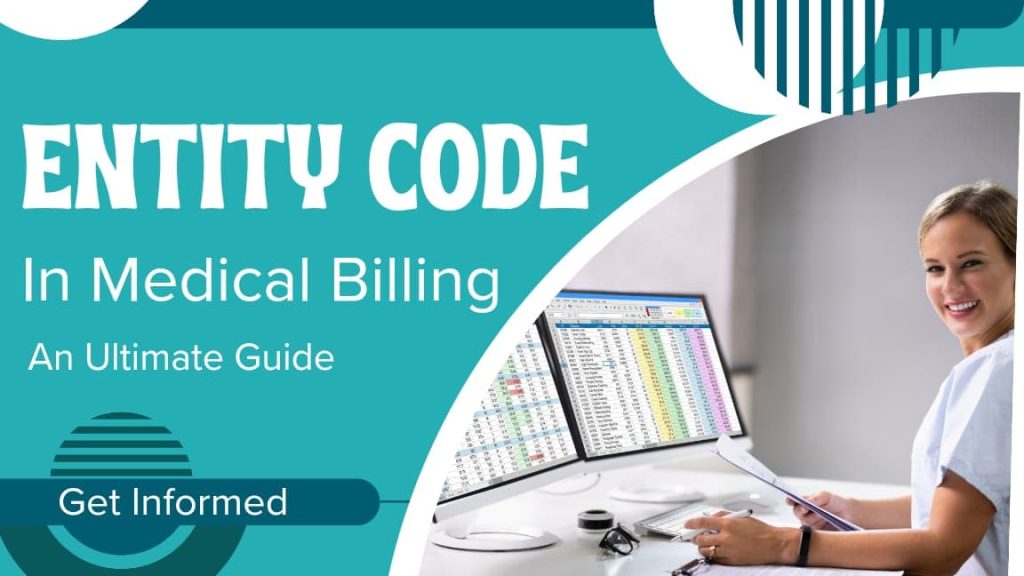Entire medical billing is based on coding. The whole process involves listing of treatments done on the patients and translation of those procedures into predefined codes. These codes then assist in billing and insurance payers to make reimbursements. But there are a type of codes, among them entity codes are an important one. So what is an entity code in medical billing?
Entity code is a crucial part of hospital billing. It makes sure the right entity is conducting billing. These codes provide an identity to healthcare providers, thus optimizing coding and billing operations.
Also, in order to collect reimbursement from insurance payers, these codes play a crucial role. Entity codes help them know which healthcare facility has billed the payers and this way they release the payment.
So here we will talk all about entity codes. You will learn what is an entity code in medical billing and their importance. We will also provide you with some example codes that will help you distinguish between these codes and CPT codes.
Types Of Entities In Medical Billing
When we learn what is an entity code in medical billing, we also emphasize common entities that offer healthcare services. These entities then have a separate code, which they use in the bill to receive payment from their patients and insurance providers.
Let’s have a look at the type of entities that you can get treatment from:
Typical Healthcare Providers
Hospitals: Huge medical facilities offering a variety of treatments, including both in-patient and out-patient care.
Physicians: Small to medium-sized clinics where any specialty doctor or physician provides its medical services.
Clinics: Small healthcare facilities that focus on a special health area i.e. dentist, women’s health or cupping therapy, etc.
Payers
Insurance companies: Patients often have insurance coverage. These insurance companies containing patients’ accounts pay for the service received by a certain person according to their plan.
Government payers: While insurance companies are mostly private, coverages like Medicaid and Medicare are government-owned and funded packages.
Want To Know About Coding System?
Clearing Houses
These are middle entities conducting health information transfer through electronic means. This data exchange is between health providers and payers, ensuring compliance is in place.
Other Entities
Pharmacies: Shops that provide medications under the supervision of doctors and healthcare professionals.
Diagnostic labs: These are the laboratories that conduct internal and external diagnoses on patients upon professional prescription to provide test results, helping in taking a careful step toward patient’s health.
Durable Medical Equipment Supplies: These entities are called DME. These are the certain facilities that provide equipment to be used by the patient at home, including wheelchairs, oxygen masks, drip with a stand, and supplies for diabetic patients.
How Entity Codes Are Assigned
After knowing what is an entity code in medical billing, let’s have a look at how hospitals get these codes. Each healthcare entity acquires the code through a process. The procedure may vary depending on the identification system established for each facility. Following are the common entity terms through which facilities get their separate codes:
National Provider Identifier (NPI)
In this process, hospitals and other entities receive a 10-digit code through the National Plan and Provider Enumeration System (NPPES). NPI is commonly used in general healthcare transactions.
Example: 1234567890
Tax Identification Number (TIN)
A large number of hospitals and clinics use TIN as their identification. The TIN is provided to each facility for tax purposes. Through this code, a legally responsible entity is identified for the billing.
Example: 123456789
Employer Identification Number (EIN)
Those healthcare facilities that emphasize the business aspect of health get this code. These codes are commonly used by employees and for business transactions.
Example: 12-3456789
Other Identifiers
Small healthcare entities have their separate code provided by their respective regulatory bodies or other institutions. These entities include:
- Pharmacies (Example: RX98765)
- Labs (Example: LAB123)
- Equipment suppliers
- Clearing House (Example: ABC123)
- Medicare (Example: 0123456A)
- Medicaid (Example: M12345)
3 Major Entity Code Mistakes To Avoid
Where medical billing is composed of a large number of code mistakes leading to claim denials, entity codes also play their part in contributing to these mistakes. Let us tell you some typical mistakes healthcare facilities make that damage their financial health.
Incorrect NPI
When accurately provided NPI is mentioned wrong in the claim application, it leads to straightforward claim rejection. This way insurance companies won’t find it reliable to pay and thus mismatched code may result in huge revenue loss.
Before submitting the claim, recheck the codes and make sure to add all accurate information.
Outdated Entity Info
After a change i.e. location or owner new codes are assigned. It may result in outdated code information written in the claim. So ensure you get a new code after such changes and make it a constant practice to use this code instead of an old one.
Inconsistent Code Usage
When a healthcare facility works in a big setting, they have numerous systems through which billing is conducted. This sometimes causes errors by using different codes for the same entity but different systems. Of course, if multiple codes are used, no authenticity will be displayed during the time of claim submission.
Here what you can do is to keep a regular check of your system. Make sure they are using the right and same code.
Understanding Entity Codes In Medical Billing
If you were wondering what is an entity code in medical billing, our guide might have cleared all your confusion. Being a part of hospital billing, you must know what these codes are and how they are used.
Getting updated information will make it easy for you to get into this industry. You better know how systems work in advance, so it’s a win-win situation for both your career and the healthcare facility you are working in.

